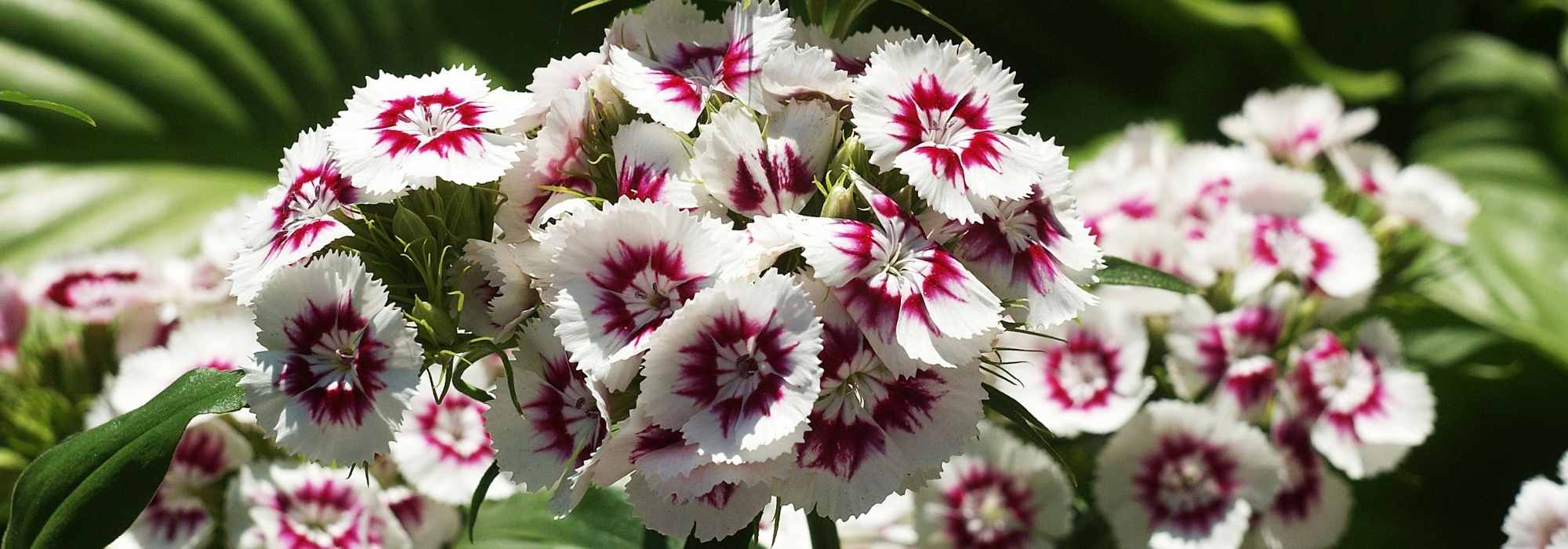
Sweet William - Dianthus barbatus: planting, sowing, care
Contents
The poet's carnation in a nutshell
- Poet’s carnation is a perennial plant often grown as an annual or biennial
- It flowers in large fragrant bouquets made up of small single or double flowers, in a wide range of colours
- It is easy to grow in cool, rich, well-drained soil, in full sun or partial shade
- It is sown at the end of spring or in summer for flowering the following year
- This garden favourite adds colour and tenderness to borders, pots, and cut flower arrangements
A word from our expert
Sweet William (Dianthus barbatus), also known as bearded carnation, perfect bouquet, or jealousy, displays delightful clusters of small, colourful, and fragrant flowers from spring until frost. This type of carnation produces large, often bicoloured inflorescences in various shades of pink, red, white, or even purple.
With its generous flowering and old-fashioned charm, this beloved host of our grandmothers’ gardens thrives in summer flower beds, borders, pots, or window boxes on the terrace or balcony, and even in the cutting garden among the tomatoes!
Often grown as a biennial, flowering in the second, or sometimes even the first year after sowing, this short-lived perennial is an easy plant that requires little maintenance once well established.
From dwarf Sweet William to new high-performing hybrid varieties, discover our Sweet William plug plants or seeds, along with our tips for sowing them directly in the ground or under cover, or even successfully propagating them by cuttings!
And, also discover all our carnations!
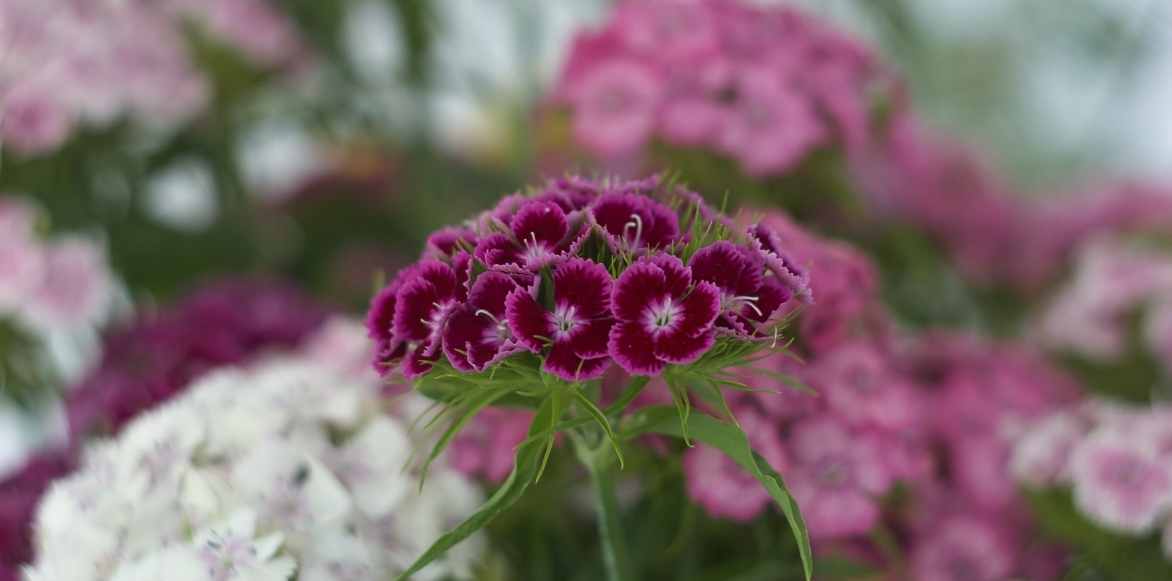
Sweet William, a charming and poetic old-fashioned plant…
Description and Botany
Botanical data
- Latin name Dianthus barbatus
- Family Caryophyllaceae
- Common name sweet William, poet's carnation
- Flowering May-June to October
- Height 0.25 to 0.70 m
- Exposure Sun, partial shade
- Soil type Rich, cool, well-drained
- Hardiness –10 °C
Sweet William, or poet’s carnation (in Latin Dianthus barbatus), also known as “ready-made bouquet”, is an herbaceous plant that belongs to the extensive family of Caryophyllaceae. The genus Dianthus includes around 300 species of perennials, including the famous florist’s carnations, the pinks (Dianthus plumarius), and biennials like the renowned Dianthus barbatus or sweet William. Some new hybrid varieties of sweet William, such as the cultivars from the ‘Jolt’ series, combine vigorous growth, vibrant colours, great tolerance to heat and cold, and exceptional flowering from spring until frost.
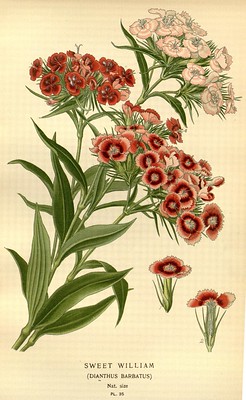
Dianthus barbatus: botanical illustration from 1896
It is found in the wild at altitude on rocky slopes, in clear forests and meadows of Northern Europe and Asia. It is a fleeting perennial, perennial in climates with mild winters, but most often considered annual or biennial elsewhere.
From a branching stump, it slowly forms an upright, rounded tuft, 25 to 60 cm high with a similar spread. Dianthus barbatus is among the tallest of the carnations. The deciduous or semi-evergreen foliage consists of long, narrow, lanceolate leaves that taper to a point. This vigorous vegetation is coloured from light green to glaucous green.
The flowering emerges from these beautiful bushy tufts, from June to September. The plant flowers in the second year following its sowing.
The flowers are the true attraction of this herbaceous perennial. Sweet William offers a generous and slightly fragrant flowering. The floral stems bear large, dense clusters that bloom small, flat, solitary carnations tightly packed together. These terminal umbels can measure up to 15 cm in diameter. As with all carnations, the flowers can be single with 5 petals, double, or semi-double depending on the varieties. Their petals are delicately carved and fringed. They are encased in a tubular calyx and surrounded by elongated, narrow bracts, “barbatus”, referring to this frill.
Sometimes solid, often bicoloured, they display a combination of tones, variegated, maculate, or striated around a contrasting heart. Some varieties exhibit changing colours as they bloom. They come in an infinite combination of shades from white, mauve, pink, purple, red, or even anise green in the very surprising Dianthus barbatus ‘Green Trick’.
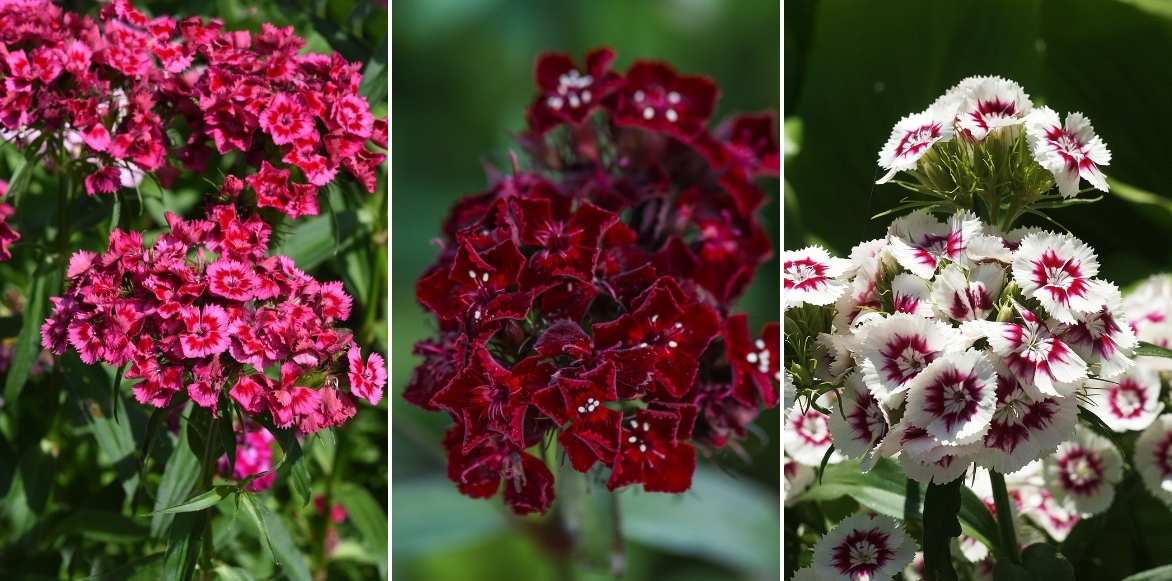
The colours of sweet William vary from solid to bicoloured petals, from white to almost burgundy red
Their characteristic fragrance is delightful, both spicy and sweet, reminiscent of clove and cinnamon. Nectariferous, these fragrant bouquets are highly visited by foraging insects, particularly bees.
Once cut, the floral stems make beautiful fragrant summer bouquets that last more than two weeks in a vase.
After flowering, the flowers transform into capsules containing many very fine seeds that sometimes self-sow abundantly.
The petals are edible, and their peppery, pungent flavour enhances summer salads, sorbets, or fruit salads, adding a colourful touch.
Read also
Dianthus: 6 ideas to pair in the gardenMain varieties

Dianthus Jolt Pink
- Flowering time June to October
- Height at maturity 45 cm
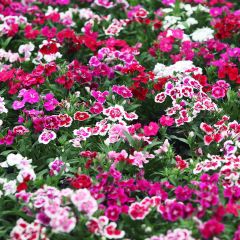
Dianthus barbatus Indian Carpet Mixed
- Flowering time July to September
- Height at maturity 25 cm
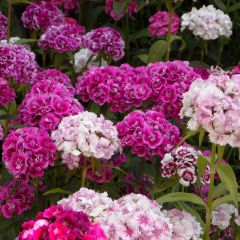
Sweet William Double Seed Mix - Dianthus barbatus
- Flowering time July, August
- Height at maturity 45 cm
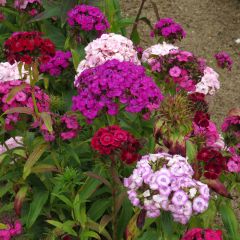
Dianthus barbatus Mix
- Flowering time July, August
- Height at maturity 50 cm
Discover other Sweet William seeds
View all →Available in 1 sizes
Available in 1 sizes
Available in 1 sizes
Available in 1 sizes
Available in 1 sizes
Available in 1 sizes
Available in 1 sizes
Available in 1 sizes
Available in 1 sizes
Planting Poet's carnations
Where to Plant?
The poet’s carnation is truly easy to grow in all our regions. It is a hardy plant that withstands frost down to -10°C. It tolerates both rain and summer droughts.
It thrives in any fresh, rich, well-drained soil, even calcareous, preferably in full sun, although it will accept partial shade. It enjoys bright, warm locations and needs at least 3 to 4 hours of sunlight per day.
Plant it in groups along a pathway, near a frequently visited area, or in the middle of a sunny border to add splashes of colour. In the vegetable garden, it will also find its place in the corner reserved for cut flowers for bouquets.
It is particularly well-suited for window boxes on the terrace or balcony or on flowering slopes.
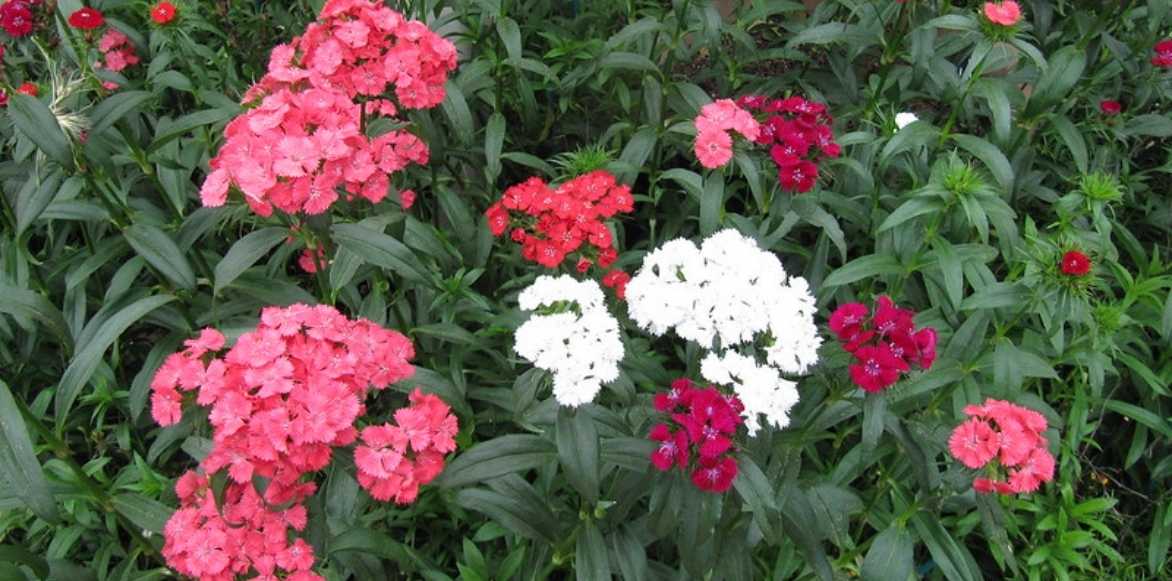
Dianthus barbatus in a border (© Leonora Enking)
When to plant Dianthus Barbatus?
The planting of our poet’s carnation young plants in plug plants takes place in spring, from March to May, outside of frost and heavy rain periods.
How to plant It?
In open ground
Count 5 to 9 plants per m². Ensure that the soil is well-drained, as waterlogged soil makes the carnation more vulnerable to rust or certain viruses. It does not fear summer drought but is wary of humidity, both in summer and winter.
- Work the soil to a depth of about twenty centimetres
- If necessary, incorporate gravel to improve drainage
- Plant in a mixture of potting soil and garden soil without burying the basal leaves
- Space the plants 20-30 cm apart when planting
- Fill in with soil
- Lightly firm down
- Water regularly to ensure good establishment
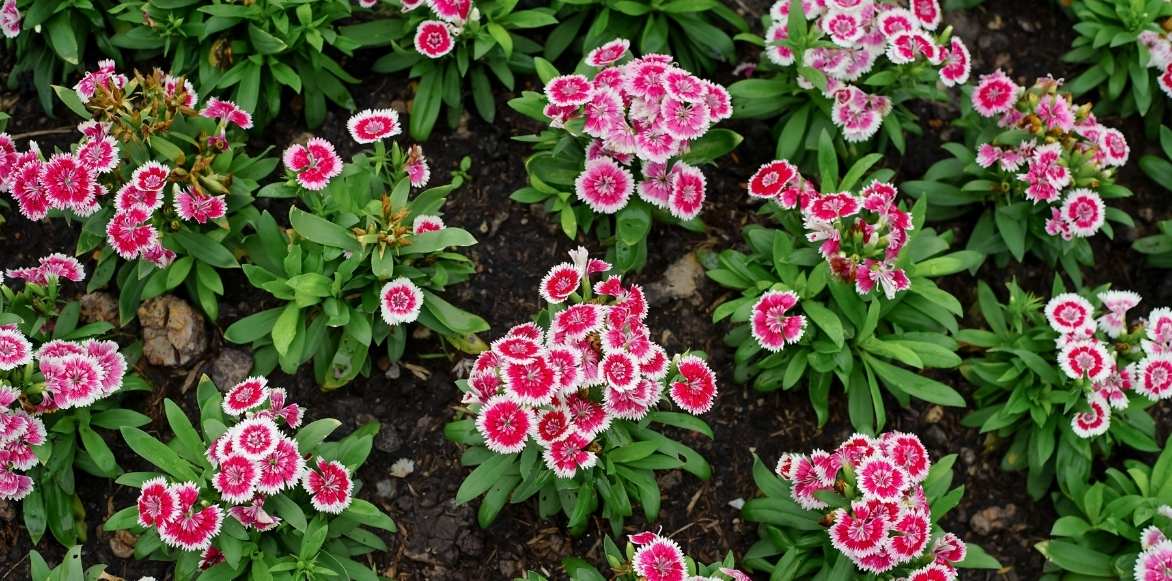 A dense planting ensures a very beautiful effect in the flower beds
A dense planting ensures a very beautiful effect in the flower beds
In pots
- Place a layer of clay balls or gravel at the bottom of the container to prevent standing water
- Plant in a mixture of potting soil, garden soil, and a bit of river sand
- Do not allow water to stand in the saucers
- Water and ensure that the substrate never dries out completely between waterings
Read also
Eyelets: which are the most fragrant?Sowing
Sow sweet William seeds indoors or in a greenhouse, from January to February, or directly in place, broadcast, at the end of spring or in summer for flowering in the following spring.
- Sow the seeds on the surface of good potting compost mixed with river sand
- Cover them lightly
- Place your seedlings in a mini-greenhouse at a temperature of 15-20 °C, or wrap the tray in a clear polyethylene bag
- Water with a fine spray without saturating the substrate until germination, which takes between 7 and 21 days
- When the seedlings have two or three leaves, transplant into 8 cm pots
- Allow the young plants to develop in cooler conditions
- Transplant outdoors, in the garden or in pots, when all risk of frost has passed
Care
Once well established, the poet’s carnation requires little care. In summer, provide watering only during prolonged dry spells. Remove faded flowers as they occur to encourage the appearance of new flower buds.
At the end of the season, lightly cut back the clumps to 20 cm above the soil to prolong their life and ensure flowering the following year. Mulch at the base to protect the roots from the cold.
In pots or containers, apply fertiliser for flowering plants during growth.
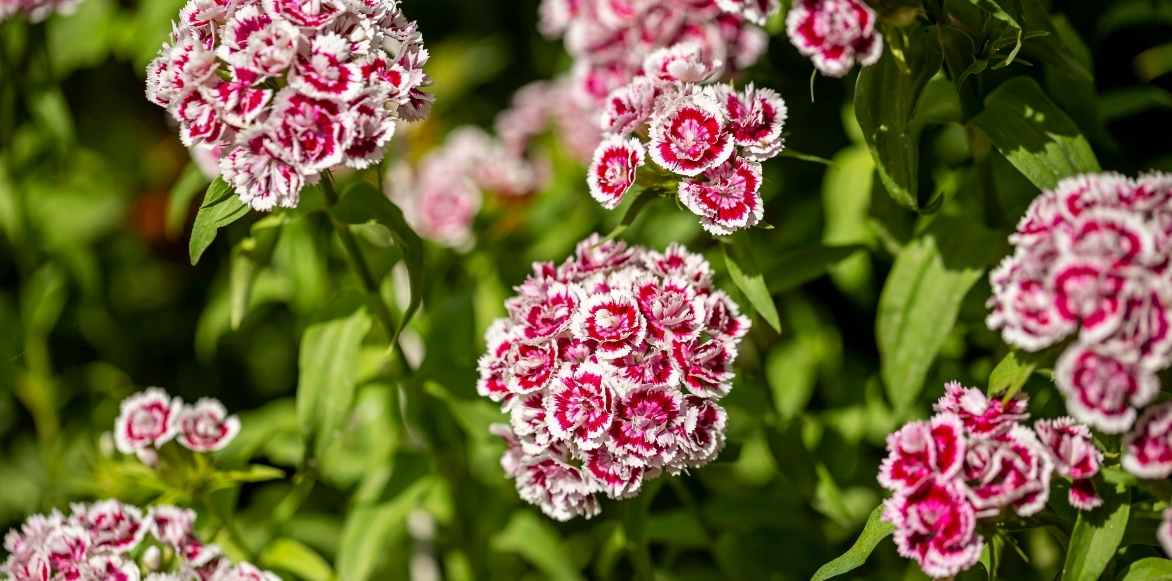
Diseases and potential pests
The poet’s eye is relatively sensitive to certain pests and diseases such as the carnation fly, the tortrix, aphids, thrips, botrytis, rust, and alternaria. Grown in well-drained soil, it will be less vulnerable. To protect it, spray regularly with diluted 20% horsetail manure and 5% tansy manure.
Multiplication
The Dianthus barbatus is easily propagated from seeds. Propagation by cuttings in summer is another easy method to multiply all carnations.
→ Discover our article to succeed in your propagation by cuttings: “Propagate and sow carnations”
Pairing ideas
The Dianthus barbatus easily finds its place in both ornamental gardens and flowering pots, as well as in the vegetable garden in the cutting corner. Poet’s carnations are plants commonly found in vicarage gardens, ideal for creating an English-style border, where they blend perfectly with garden Columbines, Catmints, Scabious, Cleomes, Love-in-a-Mist, Phlox, and hardy geraniums.
They pair well with summer-flowering plants with large blooms such as Dahlias and Echinaceas. Accent the scene with small ornamental grasses (Carex, Stipa pennata) to add extra lightness. With their rich hues in endless shades, ruby red and pink, they spontaneously mix with the cool tones of Wormwoods or Garden Campions. In pots, pair them with moss Phlox or Aubrietas.
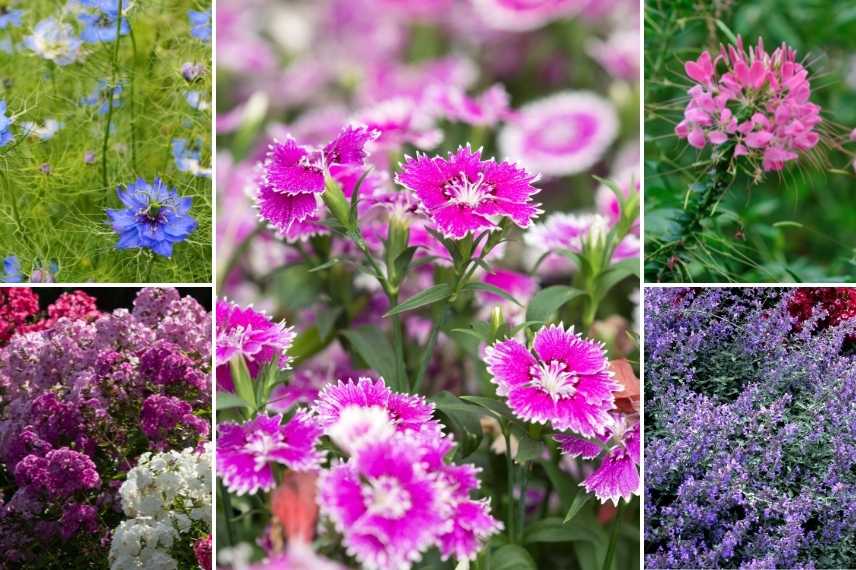
Dianthus barbatus alongside Love-in-a-Mist, Phlox paniculata, Cleomes, and Catmints
→ For even more inspiration, check out our article: “Carnations – 6 Pairing ideas”
Useful resources
Discover:
- Our wide range of carnations
- Our tutorial: How to dry carnations
- Our article: Growing a carnation in a pot
- Our article: The 5 most beautiful pink carnations
- Our article: The 5 most beautiful red carnations
- Our article: The 5 most beautiful white carnations
- Perfumer’s plants
- Also find all our tips and advice for successfully sowing annual seeds: how to do it well, in the ground or in trays.
- Subscribe!
- Contents































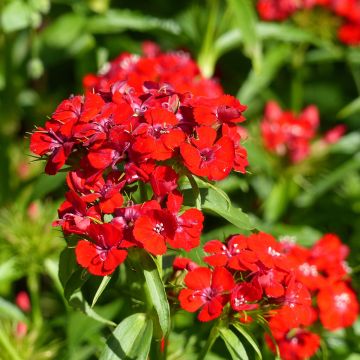

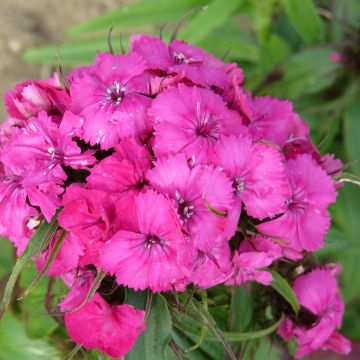

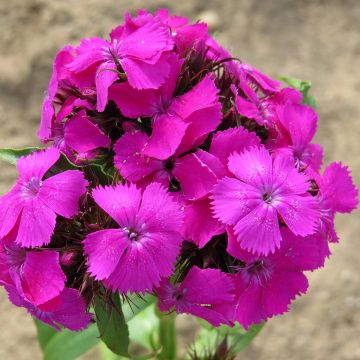

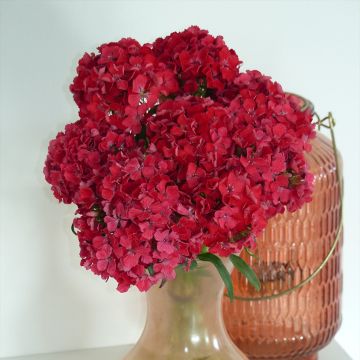
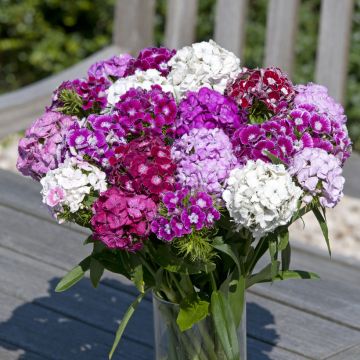


Comments